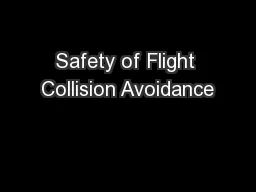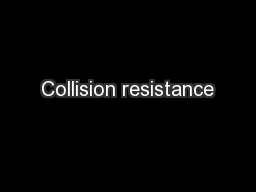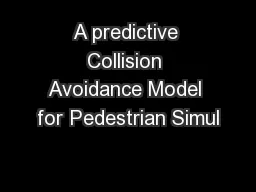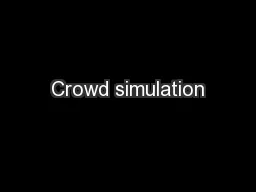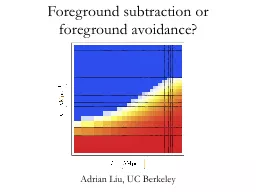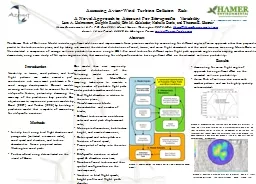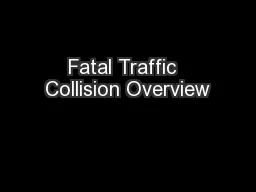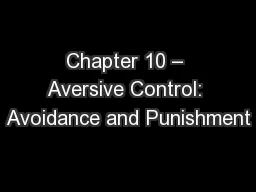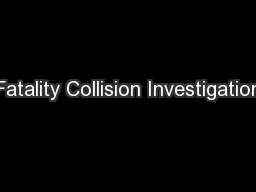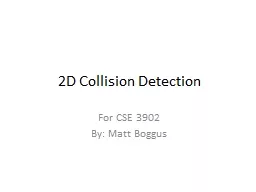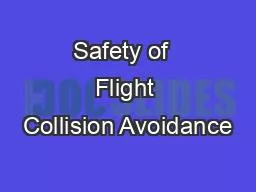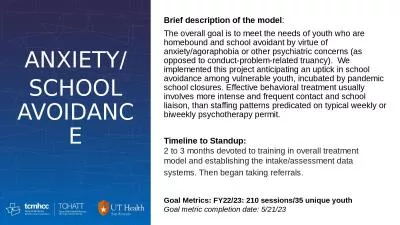PPT-Safety of Flight Collision Avoidance
Author : lois-ondreau | Published Date : 2018-03-17
VFR Means the airplane is operating under see and avoid principles 91113 IFR Means the airplane is being separated by ATC Contrast with meteorological conditions
Presentation Embed Code
Download Presentation
Download Presentation The PPT/PDF document "Safety of Flight Collision Avoidance" is the property of its rightful owner. Permission is granted to download and print the materials on this website for personal, non-commercial use only, and to display it on your personal computer provided you do not modify the materials and that you retain all copyright notices contained in the materials. By downloading content from our website, you accept the terms of this agreement.
Safety of Flight Collision Avoidance: Transcript
Download Rules Of Document
"Safety of Flight Collision Avoidance"The content belongs to its owner. You may download and print it for personal use, without modification, and keep all copyright notices. By downloading, you agree to these terms.
Related Documents

